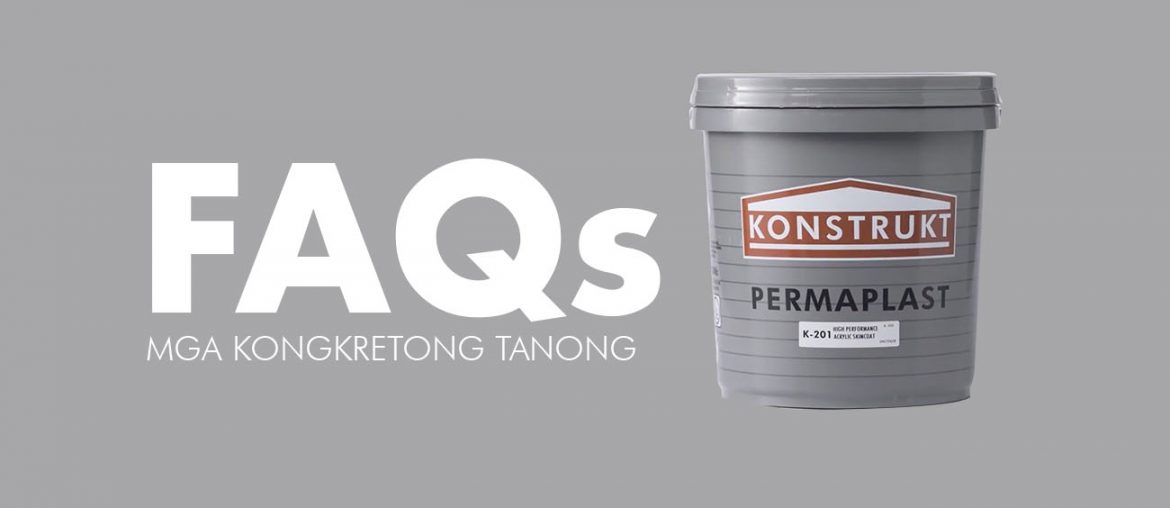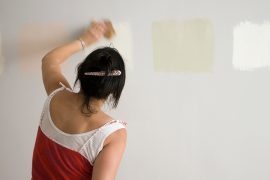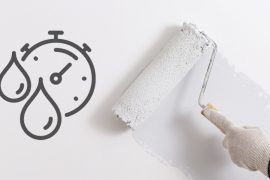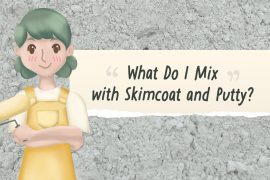We get a lot of questions about Konstrukt Permaplast K-201 High Performance Acrylic Skimcoat—and it’s not surprising why. It’s a wonderful product that corrects concrete imperfections and gives walls a beautiful smooth finish. But, if you’re not familiar with it, there are some technical aspects that you need to know to get the best possible outcome. And so, to help, we’re here to answer some frequently asked questions about Konstrukt’s skimcoat.
What is Skimcoat?
Let’s start with a brief introduction. Skimcoat is a surface preparation product and an alternative plastering material that corrects surface imperfections, giving concrete walls a smooth appearance. It’s great at repairing bubbles, honeycombs, and other concrete defects like waviness and plumbness. While formulation may vary depending on the manufacturer, skimcoat can usually correct imperfections that are 2 mm to 3 mm thick.
Manufactured by the same company that brought you Boysen, Konstrukt Permaplast K-201 High Performance Acrylic Skimcoat was formulated to have excellent paint compatibility which means you can use it with different concrete paint types like water-based, solvent-based, or elastomeric. It can also be used on both interior and exterior applications. Apply it on new, bare concrete as part of surface preparation procedures and prior to painting (a.k.a. before your primer).
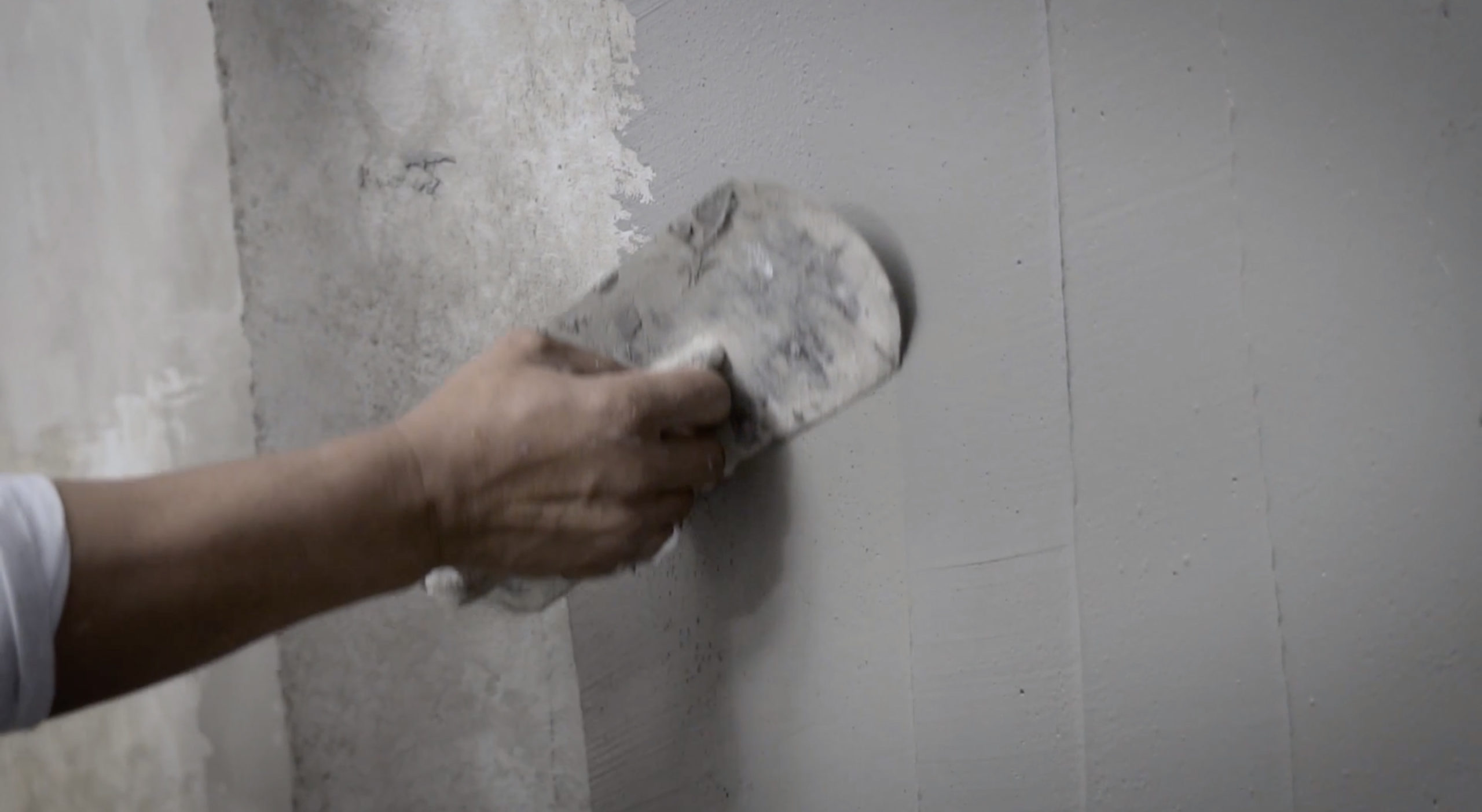
Frequently Asked Questions
How do I use and apply the Konstrukt Permaplast K-201 High Performance Acrylic Skimcoat?
Konstrukt Permaplast K-201 High Performance Acrylic Skimcoat is mixed in a 1:1 ratio with sifted cement. Do not add any water! The resulting mixture should be used within 1 to 2 hours.
Dampen your concrete surface and use a steel trowel to apply a thin layer of the mixture on your wall. Apply a second coat after an hour. You can further smoothen the surface by sanding it. (Wait another hour after the second coat before sanding!) Let your surface cure for 7 to 14 days before painting.
Watch the video below for instructions in Filipino. A more detailed step-by-step guide can also be found here.
How does skimcoat differ from masilya (putty in English)?
Some use skimcoat (a type of plastering material or palitada) and putty (masilya) interchangeably, but don’t be mistaken. Though they both correct surface defects, they’re different things.
Both skimcoat and putty correct surface imperfections and defects. However, to put it simply, skimcoat was formulated for use on bare concrete walls. It is for more noticeable defects such as honeycombs and waviness that are 2mm to 3mm thick. Putty is for primed or painted walls. It is for minor imperfections such as hairline cracks and slight unevenness that are less than 1mm.
While Konstrukt Permaplast K-201 High Performance Acrylic Skimcoat can be used on both interior and exterior applications, the case is different for putty. Boysen Masonry Putty B-7311 is for interior use only, while Boysen Acrytex Cast B-1711 is for exterior use.
Find a more comprehensive blog post on the difference between skimcoat and putty here.
Can I use skimcoat on a surface that already has paint on it?
You cannot use skimcoat on a surface that already has paint on it.
Konstrukt Permaplast K-201 High Performance Acrylic Skimcoat is made to be applied on bare concrete, hence, that’s where you should apply it. Remember, you will not achieve the best intended results if you go against manufacturer recommendations.
Can I use skimcoat for waterproofing?
Though skimcoat can somewhat improve a surface’s water resistance, it is not meant to be used as a waterproofing product. It is meant to fix imperfections and give your walls a smooth finish. If you’re looking to waterproof, reach for Boysen Plexibond instead!
Can I use skimcoat for floors?
Some may want smooth concrete floors, say, for a garage or even a home basketball half-court. But, unfortunately, you should not use the Konstrukt Permaplast K-201 High Performance Acrylic Skimcoat for floors. It’s meant to be used on concrete walls so apply it there only.
Can I use skimcoat on wood?
This is another no. Skimcoat is for use on concrete. To correct surface imperfections on wood (except flooring), use putty instead. Find a guide on putty for wood, including Boysen’s wood putty products, here.
I don’t want to use a primer anymore. Can I apply a topcoat directly on the skimcoat?
The answer for this would vary depending on the formulation of the skimcoat that you’ll be using, so it’s best to consult the manufacturer for their recommendations on proper product use.
If you’re using Konstrukt Permaplast K-201 High Performance Acrylic Skimcoat, you shouldn’t directly apply a topcoat over it. You still need to use a primer. Yes, this is even if the cement you used with your skimcoat is already white. The primer serves as a sealer for the concrete surface and helps the topcoat to adhere better.
We hope this blog post answers your questions about Konstrukt Permaplast K-201 High-Performance Acrylic Skimcoat. If you have other queries regarding it or any other Boysen product, our technical team will be happy to assist you. Send an email to ask@myboysen.com or call (02) 8363-9738 local 413 to 418 during office hours for a one-on-one consultation.

